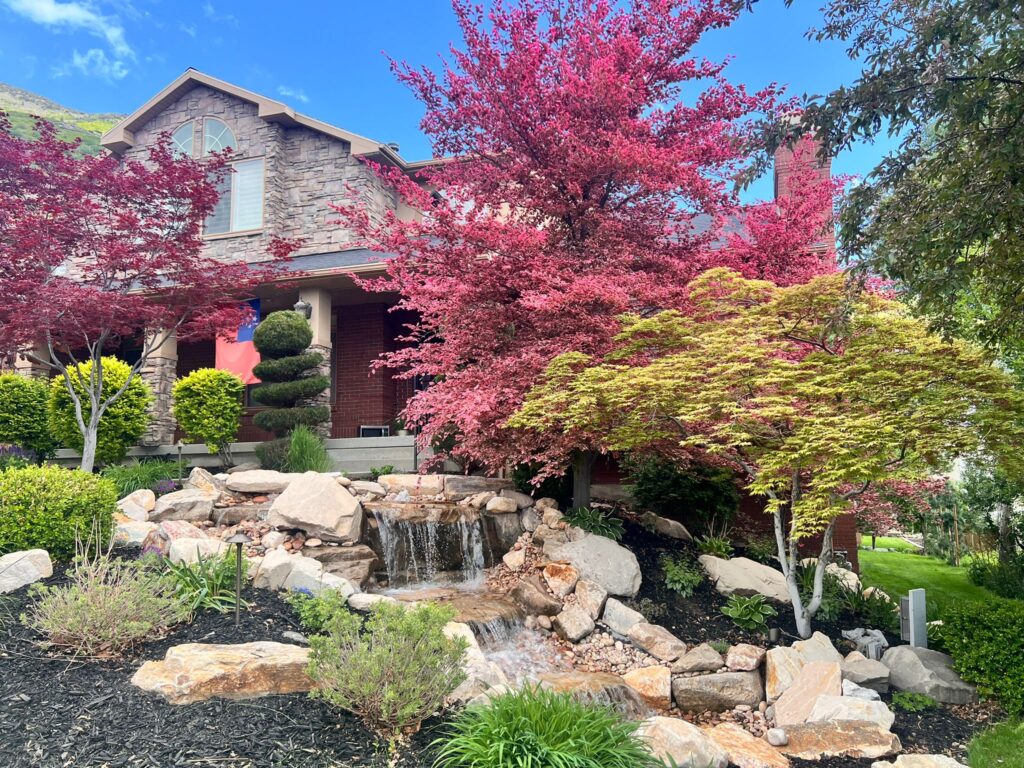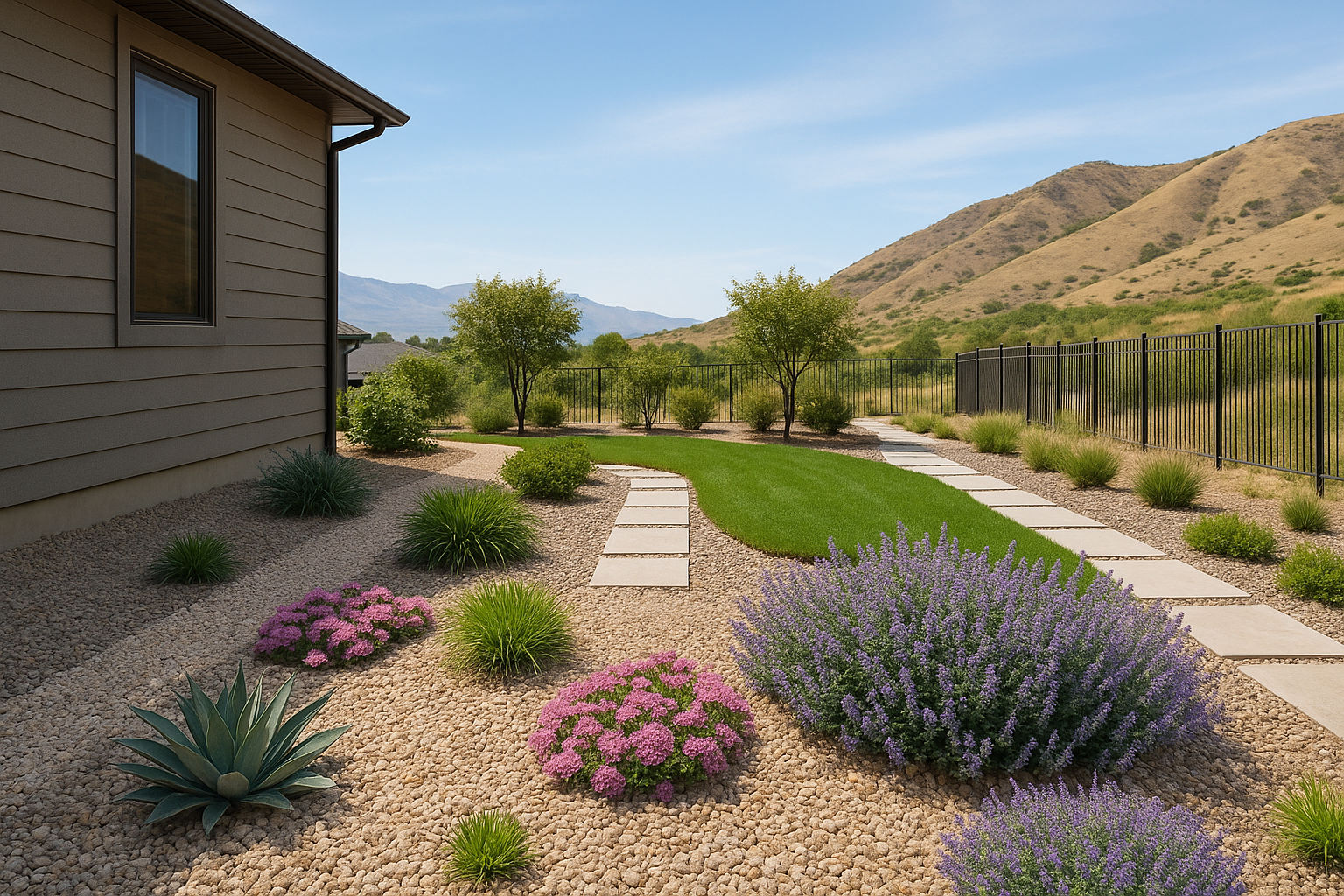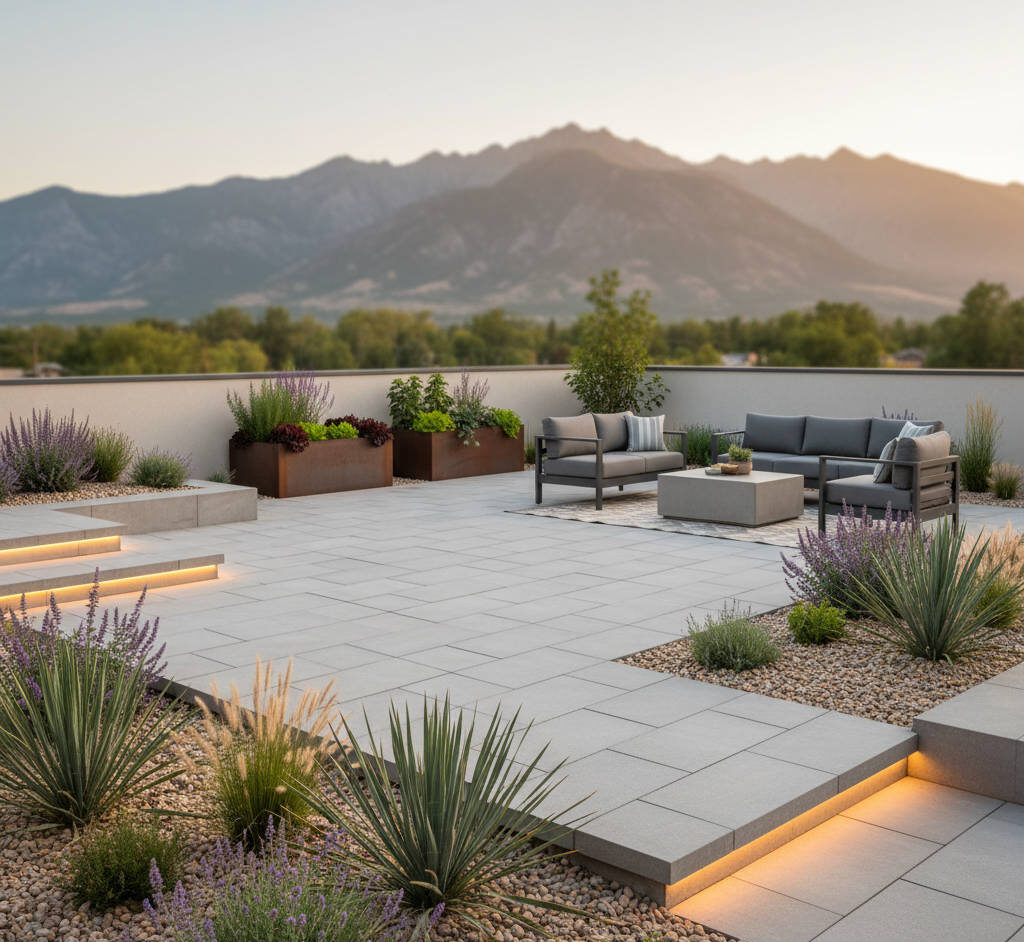Living Near Utah’s Foothills? Here’s How to Landscape for Safety and Beauty
Utah’s foothill communities—from Sandy and Draper to Bountiful and North Salt Lake—offer breathtaking views, natural terrain, and peaceful surroundings. But with those perks comes risk: wildfires.
As climate conditions intensify and fire seasons lengthen, more homeowners are looking to firewise landscape design to protect their properties. Fortunately, you don’t have to sacrifice beauty for safety. This guide covers how to design a yard that’s defensible, drought-tolerant, and uniquely Utah.
Why Firewise Landscaping Matters in Utah
Every summer, Utah faces red flag warnings, especially near the Wasatch Front. Foothill neighborhoods with native grasses, dry brush, and high winds are particularly vulnerable.
Firewise landscaping is a proactive way to:
- Slow or stop the spread of fire toward your home
- Protect first responders by creating safe access zones
- Reduce ignition risks from embers or surface fires
- Increase your home’s chances of surviving a wildfire
And yes—it can still look amazing.
Defensible Space: The Three Firewise Zones
The Utah Firewise program recommends dividing your yard into three zones:
Zone 1 (0–5 feet): Immediate Defensible Zone
- Keep this area lean, clean, and green
- Use non-combustible materials (gravel, stone, pavers) instead of mulch
- Avoid fire-prone plants like juniper or ornamental grasses near siding
- Trim back any branches hanging over the roof or chimney
Zone 2 (5–30 feet): Intermediate Zone
- Space trees and shrubs strategically to avoid “ladder fuels”
- Incorporate low-growing, fire-resistant plants like agave, yarrow, and sedum
- Use hardscaping breaks like patios, pathways, or walls to block fire progression
Zone 3 (30–100 feet): Extended Zone
- Reduce fuel loads in native vegetation
- Thin trees and remove dead limbs or debris
- Consider planting fire-tolerant natives that thrive in Utah’s dry soil
Fire-Resistant Plants for Utah Yards
Not all plants ignite easily. Choose species with:
- High moisture content
- Low resin/sap production
- Compact, non-flammable structure
Recommended Firewise Plants for Utah:
- Autumn Sage (Salvia greggii) – Vibrant color, low flammability
- Ice Plant (Delosperma) – Dense, succulent groundcover
- Blue Mist Spirea (Caryopteris) – Attracts pollinators, firewise foliage
- Penstemon – Native flower, low ignition potential
- Serviceberry – A beautiful small tree with edible berries
- Nepeta (Catmint) – Fragrant, deer-resistant, and firewise
- Sedum – Water-storing leaves, excellent for rock gardens
Avoid: juniper, pampas grass, arborvitae, and pine bark mulch near structures.
Hardscaping Tips for Fire Safety
Smart hardscape layout supports defensible design and creates aesthetic balance.
- Use gravel or decomposed granite around foundations and fence lines
- Add retaining walls or dry creek beds as fuel breaks
- Choose non-flammable fencing (metal or masonry over wood) near structures
- Create stone patios or open walkways between plant zones to stop fire spread
Pro Tip: Avoid wood decks or place them with ample clearance and protection below.
Irrigation, Maintenance & Ember Protection
Firewise design isn’t just about what you plant—how you maintain it matters.
- Install drip irrigation systems to keep roots hydrated and surfaces dry
- Prune low-hanging branches and clear debris regularly
- Clean gutters, eaves, and vents of dried leaves and needles
- Store firewood or flammable materials 30+ feet away from the house
- Use ember-resistant vent screens to protect attics and crawl spaces
Local Insight: Firewise Landscaping for Salt Lake City & Foothill Communities
If you live near Little Cottonwood Canyon, Emigration Canyon, Millcreek, or other WUI zones (Wildland-Urban Interface), firewise practices are more than smart—they’re essential.
Salt Lake City homeowners may also be eligible for city-sponsored fire mitigation programs or grants. Contact your local fire authority or neighborhood council for updates.
FAQs: Firewise Landscaping for Utah Homeowners
Q: What is the best groundcover for firewise landscaping in Utah?
A: Succulent plants like ice plant or creeping thyme are ideal. Gravel and stone also work well.
Q: Can I keep my pine trees in a firewise design?
A: It’s best to thin them and keep branches pruned up 6–10 feet from the ground. Avoid planting new pines near structures.
Q: Is mulch safe to use in fire-prone areas?
A: Use gravel or rock mulch within 5 feet of your home. Bark mulch can ignite from embers.
Q: How often should I maintain my yard for fire safety?
A: Inspect monthly during fire season. Prune annually and remove dry debris regularly.
Q: What’s the biggest mistake homeowners make in fire-prone areas?
A: Using flammable plants near the home and failing to maintain defensible space over time.

Millburn Lawn & Landscape specializes in firewise landscape design for Utah’s foothill communities. We combine safety, sustainability, and curb appeal in every plan—so you can enjoy peace of mind and a beautiful outdoor space.
Explore Our Landscape Design Services
Serving Salt Lake City, Draper, Herriman, Sandy & surrounding foothill areas
Book a free firewise consultation today



